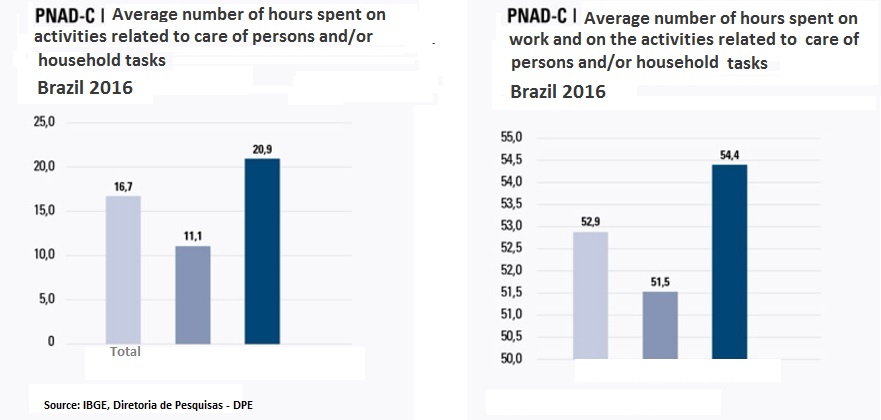Household tasks characterize women's bigger workload
December 07, 2017 10h00 AM | Last Updated: December 07, 2017 05h21 PM
Women, even those in the job market, are still the majority when it comes to housework and care of the children. In 2016, considering all the hours spent on those activities in the housing unit and to professional activity itself, women worked more than men, with an average work shift that surpassed 54 hours per week; men worked, on the average, worked 51.5 hours per week.
The 2016 Continuous Pnad module, Other forms of work, released today by the IBGE, presents information about activities not included in the labor market and that, therefore, are not classified as "employment", investigated in other modules of the same survey. It includes four types of activity: production of goods for own consumption, domestic work, care of resident persons or relatives and volunteer work.
Analyst Alessandra Brito, responsible for this survey topic, explains that, although they are not part of the Gross Domestic Product (GDP) account, the other forms of work are very important because they consist or a number of "invisible", yet valuable, activities. “When a person does a household task, that is valuable because it might have been done by someone employed for that, in order to earn money. Similarly, in production for own consumption, the person produces something that could have been bought in the market, for a given price”, completes Marina Ferreira, also an analyst from the IBGE.

Women spend twice as much time as men in care of persons and housework
Considering the time spent on housework and care of persons, inequality is even bigger: women work twice as much as men (20.9 versus 11.1 hours per week) compared to men doing similar activities.
The survey also shows that, even when sharing the home with a partner, the percentage of women who did housework still surpassed that of men: among the women who lived with a husband or partner, 95.6% used to do domestic tasks; among men, however, that figure was 76.4%.
Text: Marília Loschi
Design: Helga Szpiz
Photo: Pedro Vidal


















